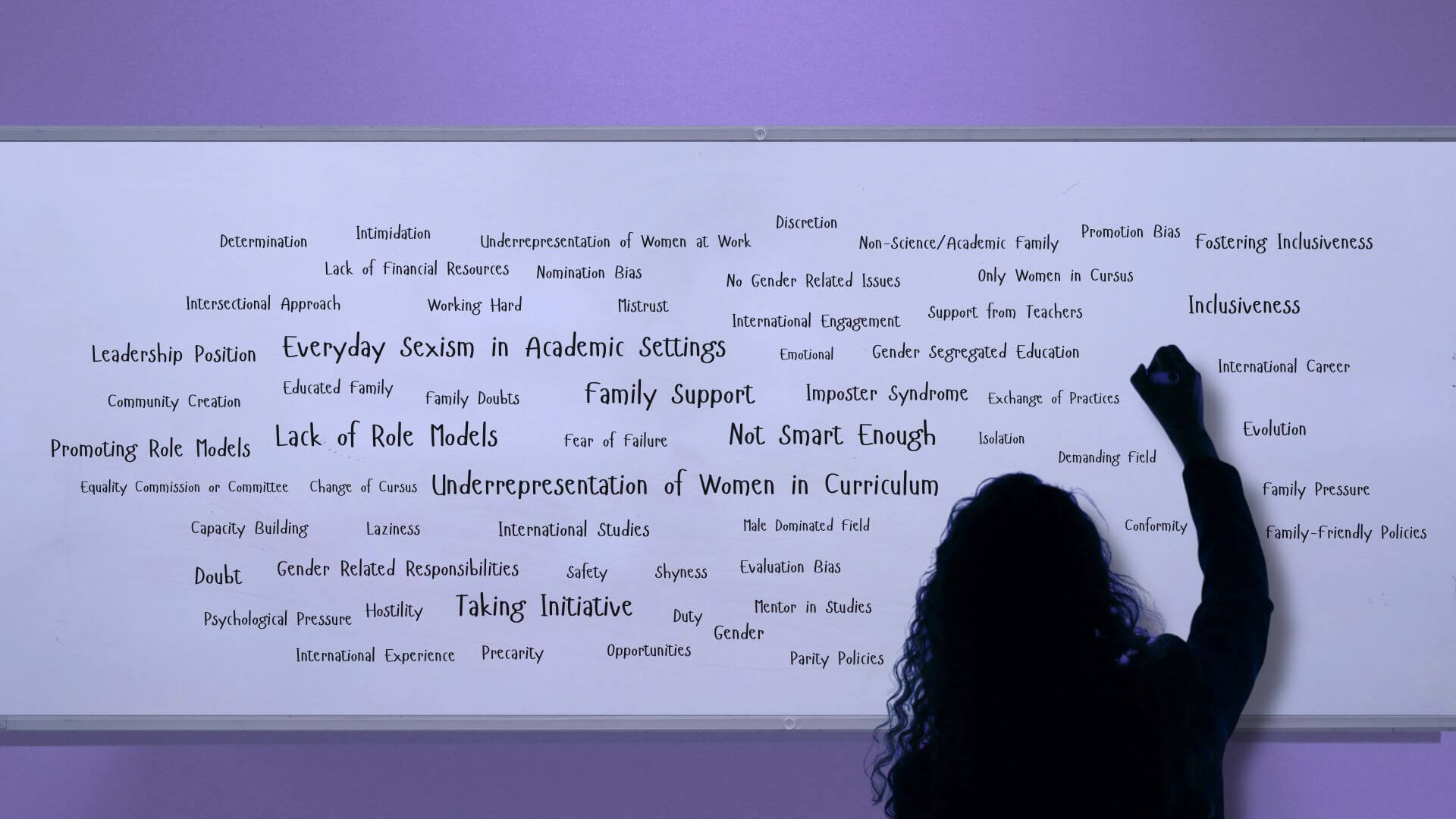
This article is the first in the series ‘Women Scientists Around the World: Strategies for Gender Equality,’ which explores the drivers and barriers to gender representation in scientific organizations. It draws on a qualitative pilot study I conducted in consultation with the Standing Committee for Gender Equality in Science (SCGES), based on interviews with women scientists from various disciplines and geographic regions. The series of articles will be published simultaneously on the ISC and SCGES websites.
Science is regarded as a field of meritocracy, with talent, brilliance and innovation as main determinants of success. However, the women I interviewed, representing a diverse range of disciplines and countries, tell a different story.
A 2020 study by the International Science Council (ISC), in partnership with the InterAcademy Partnership (IAP), coordinated by GenderInSITE, shows that women’s representation in national science academies increased from 13% in 2015 to 17%, and that 37% of the international disciplinary unions surveyed had a woman president.
Despite this progress, the figures still do not reflect the proportion of women in the broader scientific community, with significant disparities across disciplines and regions—particularly between the natural and social sciences. So, while scientific institutions claim to value merit, are biases still holding women back in science?
The women interviewed revealed significant differences in the inclusivity of scientific organizations around the world. While most institutions seem to lag behind and remain overwhelmingly male-dominated, others are making strides toward diversity, often relying on the persistence of trailblazing women to drive change.
A notable example comes from the Bolivian Academy of Science, where, upon the impulse of its first female President, transparent nomination criteria were introduced to encourage diversity – replacing a process that relied on a vote by all members. By shifting to a point-based evaluation system, the academy opened its doors to more women.
Interestingly, the interviews suggested that academies in the Global South and small island states are often more proactive in promoting diversity. “If we don’t encourage women and younger generations to join, we simply won’t survive,” one member of the Caribbean Academy noted. In many of these regions, smaller scientific communities and the need for innovation make inclusion a priority.
Institutional change is notoriously slow, and women scientists are not patiently waiting for change to spontaneously happen. Many of the women interviewed are actively creating and participating in women-driven networks to foster gender equality in science. These networks provide mentorship, professional opportunities, and spaces where women can exchange strategies and ideas.
One Iranian cosmologist shared her story of working to create an exclusively female branch of the National Astronomy Institute. “In Iran, it was difficult for women to participate in nighttime sky observations because of cultural restrictions,” she explained. By establishing a women-only group, she hoped her female colleagues could engage fully in scientific activities. Unfortunately, she faced resistance from colleagues, who questioned the need for a separate women’s branch, failing to understand the unique challenges women faced in the field.
Across disciplines, women are leading initiatives that drive change from within. Nearly all the women I spoke with had, at some point, established their own committees, associations, or initiatives to boost female participation. They dedicate significant time to advancing gender equality, volunteering in their institutions and beyond.
One interviewee offered a telling example: “I remember at that time, in 2010, many of us thought that Laure Saint-Raymond, a French mathematician, was going to be the first woman to ever win the Fields Medal. But then she didn’t. Cédric Villani, another French mathematician, won it. Of course, he deserved it—I’m not saying otherwise—but we were disappointed. We thought, ‘Well, okay, maybe next time it will happen. We fought in all the committees, especially the European ones, trying to convince people at the International Mathematical Union (IMU) that it was time to take seriously the role of women in mathematics. There are many—many, not just a few—extremely smart women mathematicians who deserved this award.”
In 2014, Maryam Mirzakhani, an Iranian mathematician, became the first woman to receive the Fields Medal. She was followed by Maryna Viazovska, a Ukrainian mathematician, in 2022. To date, only two women have been awarded the Fields Medal out of 64 recipients.
A recurring concern among the women interviewed was the “discouragement and shyness” they observed in many of their female peers, who tend to “keep their head low”. While imposter syndrome and self-doubt are common struggles, they observed that these challenges are more common among women who are less involved in advocacy. This contrast highlights the need for stronger support systems and more visible and diverse role models to empower all women in science.
Through their stories, the pilot study highlighted a variety of strategies women have used to navigate and overcome the systemic barriers and biases they face.
Many have sought out international experiences—leveraging international spaces and experiences as a neutral space away from potential local conservative environment— to collaborate, build expertise, and access opportunities.
One scientist from Latin America explained how a scholarship to Denmark changed her career path. “I received a phone call telling me I’d been awarded a scholarship, and I had just two weeks to prepare to travel. It all happened so fast. But that opportunity opened new connections and projects that wouldn’t have been possible otherwise. It was an incredible experience.”
For many, the international stage has provided a way to bypass the limitations of conservative or male-dominated environments. By connecting with scientists from around the world, these women not only gained new skills but also found allies in the global scientific community.
Yet, mobility remains a challenge—especially for those from developing countries where visa restrictions and political instability can make international collaboration nearly impossible. These external barriers significantly limit the career potential of Global South scientists.
As more women push for equality in science, their representation goes beyond the sake of equality—it is essential for the future of science itself. Diverse perspectives lead to more inclusive and innovative solutions, better research, and a science sector that is more representative of the society it seeks to serve.
The women I interviewed illustrate resilience and determination, but our discussions also raised important questions about the role of institutions. Are science academies and other science institutions doing enough to create positive and inclusive environments for women in science?
By highlighting the strategies and stories of women scientists, this series aims to inspire a broader conversation about how we can shape a more inclusive future for science.
 blog
blog
 blog
blog
Image by Sarah Clausen and Léa Nacache, International Science Council, featuring a word cloud obtained through the inductive thematic coding of the interviews.
Disclaimer
The information, opinions and recommendations presented in our guest blogs are those of the individual contributors, and do not necessarily reflect the values and beliefs of the International Science Council